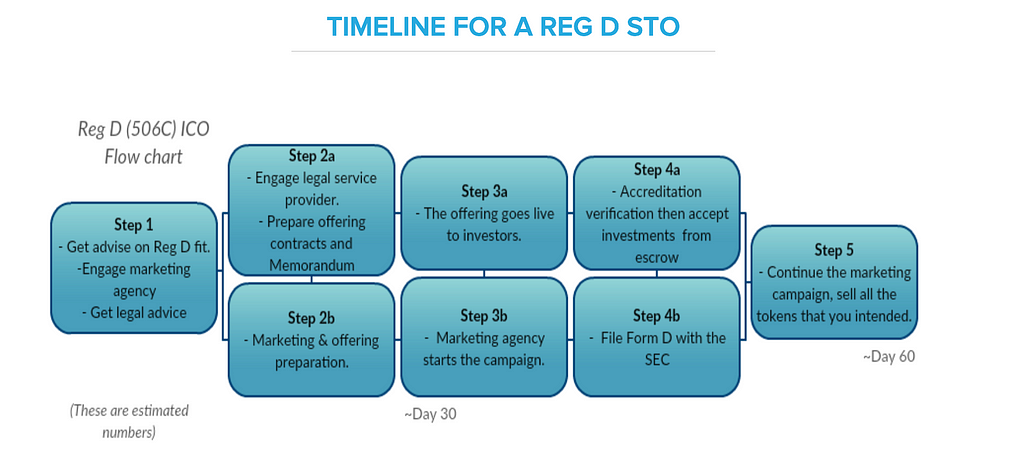Latest news about Bitcoin and all cryptocurrencies. Your daily crypto news habit.
How to Tokenize an Asset
Tokenize an asset and launch a Security Token Offering in a few misleadingly simple steps.The Market Shifts in Focus
As the blockchain technology and cryptoasset markets mature, the focus has shifted from Initial Coin Offerings and Utility Tokens to Security Token Offerings and Security Tokens. Judging by the speed at which we seem to switch focuses in this industry I imagine we’ll be onto the next big buzz word within the next few weeks (the tokenized asset buzz already seems to be dying down in fact), however, for the time being- let’s look at how tokenizing assets actually works.
Tokenizing assets is using digital tokens to prove ownership of real assets provides a number of benefits that expedite the process of buying and selling securities. Tokenizing an asset or backing the value of a token with a real-world asset opens up the potential investor base of that token to a wider market, increases liquidity compared to traditional securities, and drastically reduces the time required to trade them.
It seems like more and more companies approach me every week with hopes of tokenizing assets. Sometimes through tying the value of a token to a commodity such as gold or silver, and sometimes through more creative endeavors such as using tokens to represent ownership of a cargo ship. Through consulting these parties on how best to go about the tokenization process, I’ve noticed that companies and individuals tend to get hung up on the same steps. Largely due to a lack of understanding around the process itself. Most of the companies I speak with have already gathered many of the pieces necessary. I find that people tend to hit roadblocks from step 3 onwards (steps listed below).
To help alleviate this, let’s identify the steps one must take to tokenize an asset and examine the different options future tokenizers have available to them.
Security Token Offering Process Overview
- Identify an Asset
- Evaluation and Confirmation of Asset
- Smart Contract Generation, Tokenomics, and Tokenization Platforms
- Equity or Cash Flow
- Reg D filing with Law Firm (or Reg A or Reg A+) (2–3 months)
- Once the Reg D is filed, you can start selling tokens to investors.
Identify Asset
The first step is finding a widely traded asset like gold, silver, or diamonds. Something with a market for it already, if it doesn’t have a market you have to have a valuation done by an auditing firm or accounting firm.
For example, if someone was tokenizing a ship, it might require validation in value from accounting, banks, or consultants (Deloitte) — auditing firms
Once auditing is finalized, the smart contract has to be created. The price and number of tokens should correspond to the price and valuation of the asset.
If the asset is widely traded already like gold or silver than valuing it isn’t too difficult, because there are already existing markets that trade the asset it’s easy to pin a value to it. If you’re tokenizing an asset that doesn’t have an existing market already, you need to reach out to an auditing firm to determine a value for the token.
Auditing firms can range from law firms, accounting firms, banks, and general consulting firms like Deloitte or PwC. The more credibility the company auditing your token has, the stronger your valuation.
Smart Contract Generation / Tokenomics
This is both the easiest and trickiest part of the process. It’s easy in the sense that there are several solutions out there for generating smart contracts if you don’t want to code them yourself. I’d suggest generating a contract through a company like Polymath or GoSecurity over doing it yourself or finding a random smart contract on the internet- as a matter of fact, absolutely do not use a random smart contract you find on the internet...
This is also the part of the process when you determine your tokenomics.
Tokenomics are the economics of your token.
When generating your smart contract, you have to input how many tokens will exist and determine how many of these tokens you’ll be distributing to interested investors. This can make or break a token in the long run as this is when you determine the supply of your token. Too high of a supply can deter investors as they worry it won’t have enough demand to reach a high value, too low of a supply and your token can have low liquidity. These issues are far more prevalent when dealing with utility tokens, but still factors to consider.
Equity or Cash Flow?Determine how you’re going to tokenize the asset, are you giving equity or profit sharing/cash flow.
For example, if I’m tokenizing a farm I have a couple different options.
Equity TokensI can set the value of my new tokens to specific equity in my farm. In this scenario, I’ll generate 100 tokens that in total represent ownership of 50% of my facility. The token holder gains value as the facility increases production capacity, when new distribution deals are struck, and when it is eventually sold. This form of tokenization is similar to a traditional stock in a company, you own a tokenized share of whatever you're investing in.
Profit-Sharing/Cash Flow TokensAlternatively, I could issue 100 tokens and peg their value to a percentage of profits generated by my farm. Each token, for example, could represent 0.5% profits generated- in this case, the token holder receives value from the profits generated from your assets as opposed to the rise in value of the asset itself.
Reg D Filing
For Reg D (506 C) is the best option when filing your new security token, unless you're filing a share space filing (like an IPO). There are a few different versions of this, but Reg D or Reg A allow people to invest as quickly as possible.
There are plenty of benefits to going with Reg D (506c), but the SEC says it best so I’ve put some important facts pulled from their website below.
The company may sell its securities to an unlimited number of “accredited investors” and up to 35 other purchasers. All non-accredited investors, either alone or with a purchaser representative, must be sophisticated — that is, they must have sufficient knowledge and experience in financial and business matters to make them capable of evaluating the merits and risks of the prospective investment.
Under Rule 506(c), a company can broadly solicit and generally advertise the offering and still be deemed to be in compliance with the exemption’s requirements if:
The investors in the offering are all accredited investors; and
The company takes reasonable steps to verify that the investors are accredited investors, which could include reviewing documentation, such as W-2s, tax returns, bank and brokerage statements, credit reports and the like.
You can find more detailed information on Reg D filings here.
Find Investors & Sell Tokens through a Broker/Dealer
If you want to trade it within a year, you have to file a share space filing. If you wait a year, you can launch it on a security compliant exchange. Either way, you’re going to need access to a Broker/Dealer license and that’s going to cost you a pretty penny.
Broker/Dealers are regulated under the Securities Exchange Act of 1984 and are required to facilitate the process of buying and selling new securities. They’re compensated in several different ways, in my experience it’s usually through a pretty hefty percentage fee.
Distribute Tokens
How you distribute your tokens will depend highly on your token itself and the asset you’ve tokenized. It could be that you only need to distribute it to a small group of accredited investors, in which case it isn’t too difficult. If your planning on having several shareholders this can add a few more steps into the process but the main thing to consider here is remaining legally compliant. I highly suggest you seek out legal counsel for the duration of this process, most importantly during the final three steps of the process.
Tokenization Process Checklist Photo Courtesy of Manhattan Street Capital
Photo Courtesy of Manhattan Street Capital
(In case you were too lazy to read the article)
1. Find legal service providers to complete your SEC filing.
2. Create all the necessary internal and external documents: building your offering pitch, video, PR, graphics, social media accounts, advertising.
3. The offering goes live, the investors can purchase your Tokens or other legitimate security The investors deposit their money into escrow.
4. If you’re running a Reg D 506C token sale then the issuer is responsible for verifying that it’s investors are accredited.
5. File Form D with the SEC. Form D is a filing that does not require you to wait for SEC Qualification.
— — — — — — — —
Feel free to reach out to me via telegram @RezaJafery if you have any questions or would like to chat about STOs, Blockchain, or just nerd out about Crypto in general.
You can also find me on Discord at the Cosmic Trading Crypto Forum, join for free here!
Discord - Free voice and text chat for gamers
Tokenizing Assets for Dummies was originally published in Hacker Noon on Medium, where people are continuing the conversation by highlighting and responding to this story.
Disclaimer
The views and opinions expressed in this article are solely those of the authors and do not reflect the views of Bitcoin Insider. Every investment and trading move involves risk - this is especially true for cryptocurrencies given their volatility. We strongly advise our readers to conduct their own research when making a decision.

